User Feedback For SaaS: The Ultimate Guide
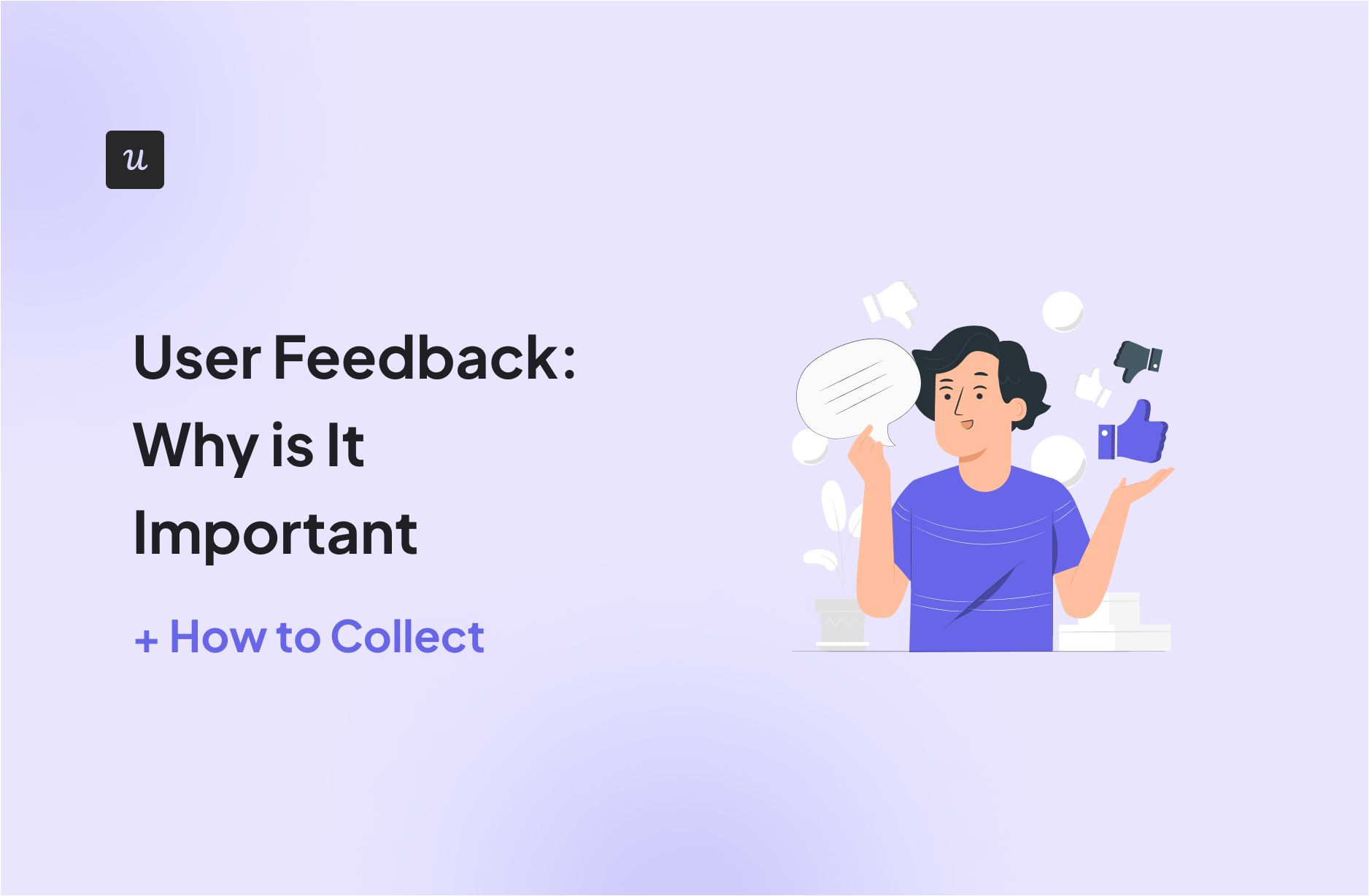
It’s difficult to imagine building a successful SaaS product without user feedback.
Why?
That’s one of the questions we answer in the article.
We also explain:
- How to collect different types of feedback.
- When to collect it.
- What types of questions to ask.
- What tools you can use to collect user feedback.
Let’s dive right in!
TL;DR
- User feedback is comments and opinions from users about their product experience.
- User feedback helps SaaS teams understand user needs and wants, and identify opportunities for product improvement.
- Proactive feedback is solicited from users while reactive feedback is voluntary.
- In-app surveys allow teams to reach active users and collect feedback at scale.
- You can collect feature requests via a feedback widget and public roadmap, or through customer-facing teams.
- NPS and CSAT surveys are examples of customer satisfaction surveys.
- User interviews and focus groups allow you to dig deeper into user feedback but are more challenging to arrange.
- Email surveys have lower response rates but allow you to reach inactive users.
- A feedback widget is a great option for gathering passive feedback or requests.
- Examples of closed-ended questions include multiple choice and Likert scale questions, while open-ended questions give users a chance to elaborate on their responses.Consider gathering user feedback:
- At the end of the onboarding process, to understand how well it helps users realize value.
- To measure new feature success after its release.
- Before the end of the trial period, to find out how to improve conversions to paid plans.
- After the user accesses help, to inform improvements to your support systems.
- Before the users churn, to understand how to retain them.
- To find out about Userpilot’s robust in-app feedback features, book the demo.
What is user feedback?
User feedback is the information, comments, opinions, and suggestions from your users about their interactions with the product.
It provides insights into how well the product satisfies the end-user needs, which aspects of the customer experience need improving, and how.
Different types of customer feedback
We distinguish two main types of feedback: proactive and reactive.
Proactive feedback involves actively seeking customer insights, normally as a part of a wider feedback strategy, for example, through regular surveys or interviews.
In contrast, reactive (or passive) feedback is unsolicited: users submit it voluntarily, normally in response to an event or experience. This could be in the form of support tickets, reviews, social media mentions, or community forum posts.
Why is user feedback important?
User feedback is essential to improve all aspects of the user experience.
SaaS teams can gather actionable insights about product performance and user behavior from analytics. However, such quantitative data doesn’t always allow them to understand why users behave in a particular way.
For example, you can easily see from analytics that your free trial conversions are low but it doesn’t tell you that users can’t find the features that are available in competing products.
Want to know the best part?
When users see that you take their opinions seriously and act on their suggestions, they feel valued and understood. This can significantly improve customer satisfaction and lead to increased loyalty and advocacy.
How to collect user feedback?
Collecting customer feedback through multiple channels increases the chances of capturing valuable insights. Here are a few popular tools of the trade.
In-app survey responses
In-app surveys are triggered when users are actively interacting with the product. This has multiple advantages:
- In-app surveys have higher response rates compared to other survey types, like email.
- You reach end-users, not the person who manages the company account.
User feedback collection via in-app surveys is also easy to scale. You can target specific user segments, and gather quantitative and qualitative feedback.
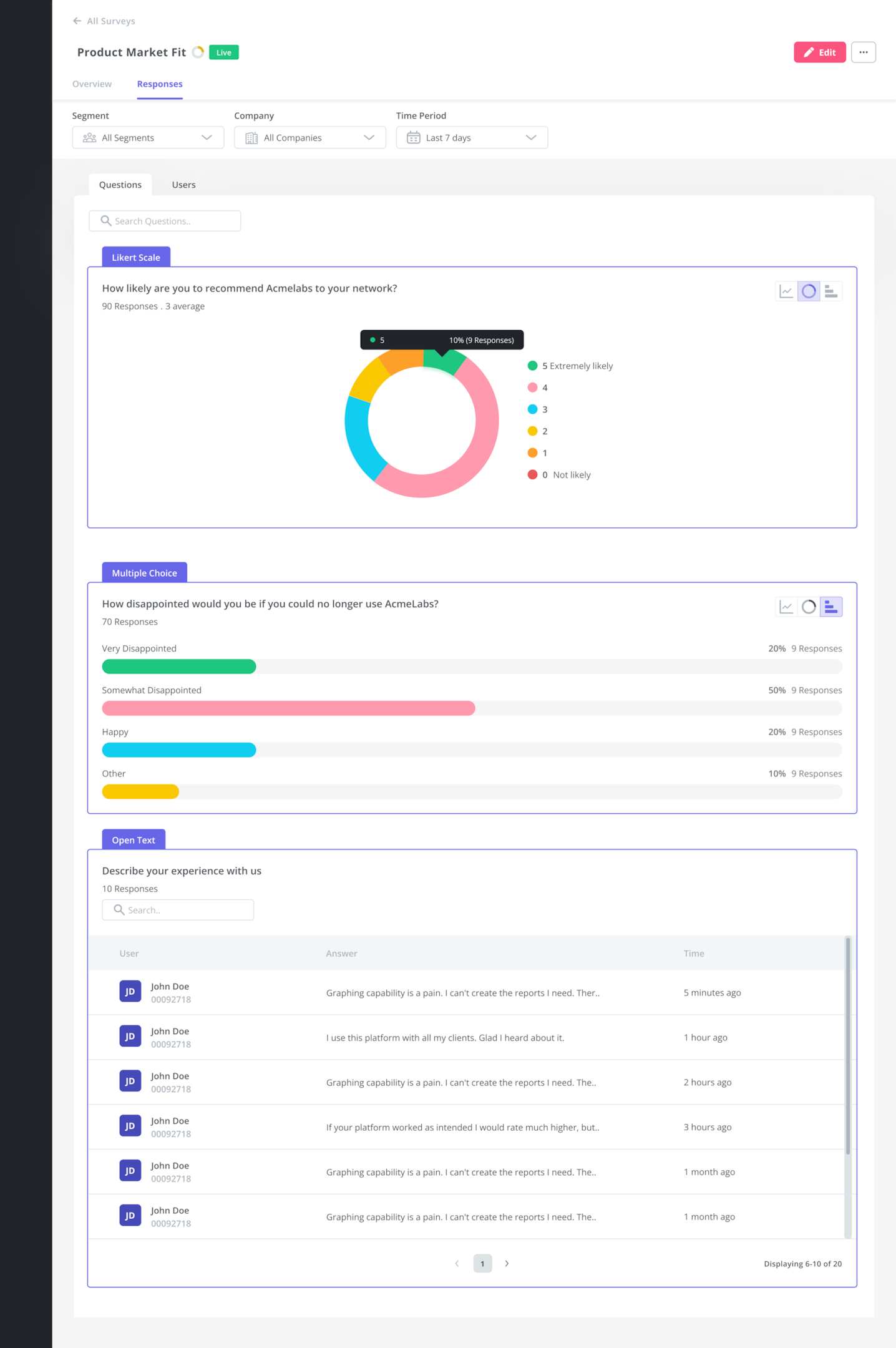
Target specific user segments and gather feedback with Userpilot.
Feature requests
Feature requests aren’t only limited to new features but also bug fixes and feature updates. If managed well, they are a good source of ideas on how to make your product more competitive and better satisfy users.
How can you collect them?
In addition to a feedback widget, you can also:
- Set up a Miro board for your customer-facing colleagues to collate ideas they pick up from their conversations with customers.
- Create a public roadmap where users can add their ideas and vote them up and down.
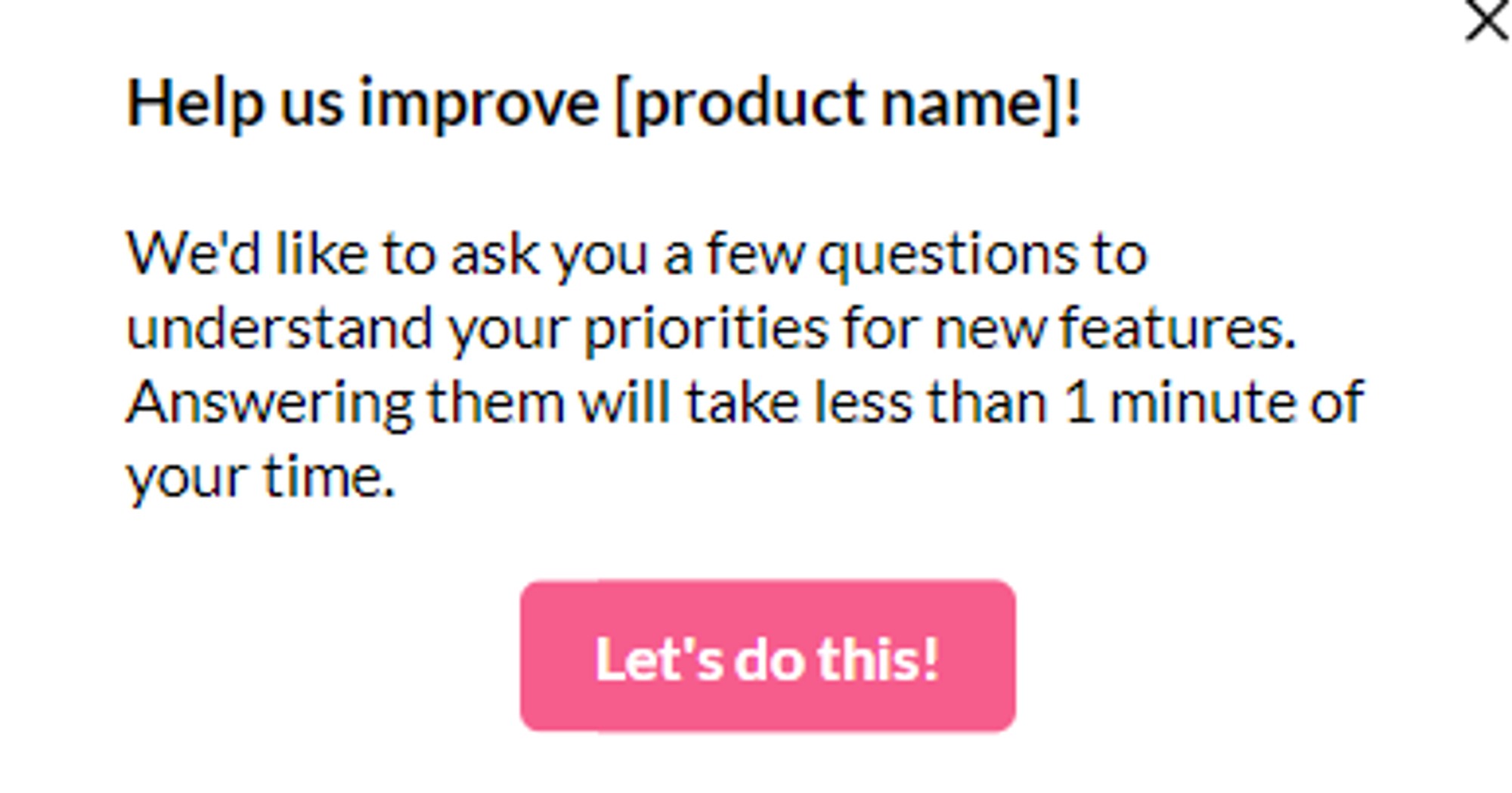
Trigger a feature request survey with Userpilot.
NPS and CSAT surveys
NPS and CSAT surveys are two types of customer satisfaction surveys.
The CSAT (Customer Satisfaction Score) survey asks the respondents how satisfied they are with the product or experience on a scale of 1 to 7.
The NPS (Net Promoter Score) survey also uses a Likert scale (1-10), but it goes one step further. It asks the customer how likely they are to recommend the product to their colleagues or friends.
The idea is that users will think twice before recommending a product because their reputation is at stake. This makes the results more reliable.

Build an NPS survey with Userpilot.
User interviews
In contrast to surveys and questionnaires, interviews aren’t as easy to scale because they require 1 to 1 contact with the participants. This is time-consuming and may be challenging to arrange.
However, they’re totally worth the effort because they give you way more flexibility than surveys. You can easily adjust your questions to ensure the user understands them and follow up on the responses to explore ideas that may not have occurred to you before.
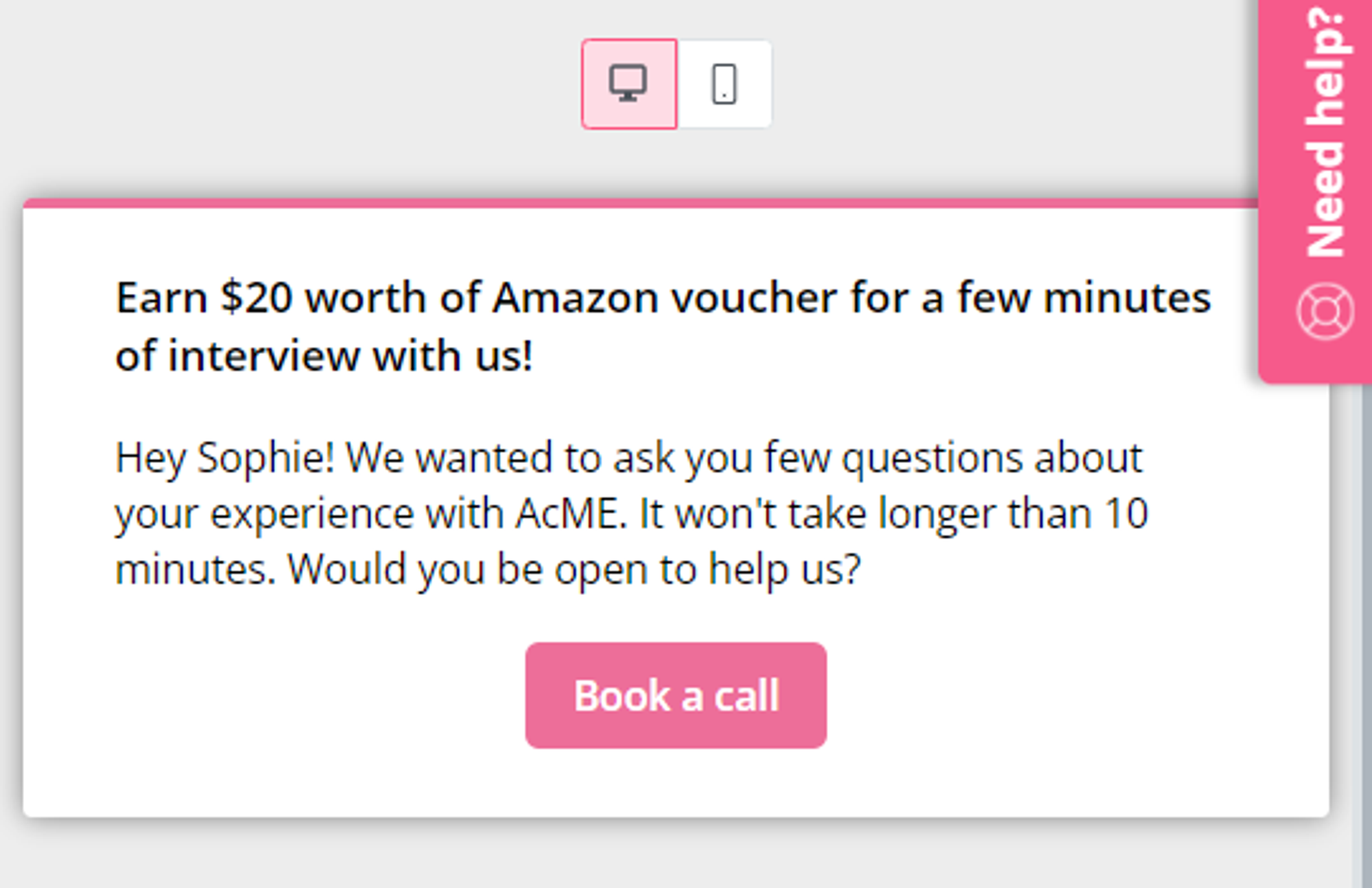
A model offers an incentive to take part in an interview.
Focus groups
Focus groups are another qualitative research method in which a small, diverse group of participants discusses a product or provides feedback under the guidance of a moderator.
Just like interviews. focus groups might be logistically challenging.
However, they have the potential to offer in-depth insights into customer needs, preferences, and pain points, spark new ideas for features, and highlight usability issues.
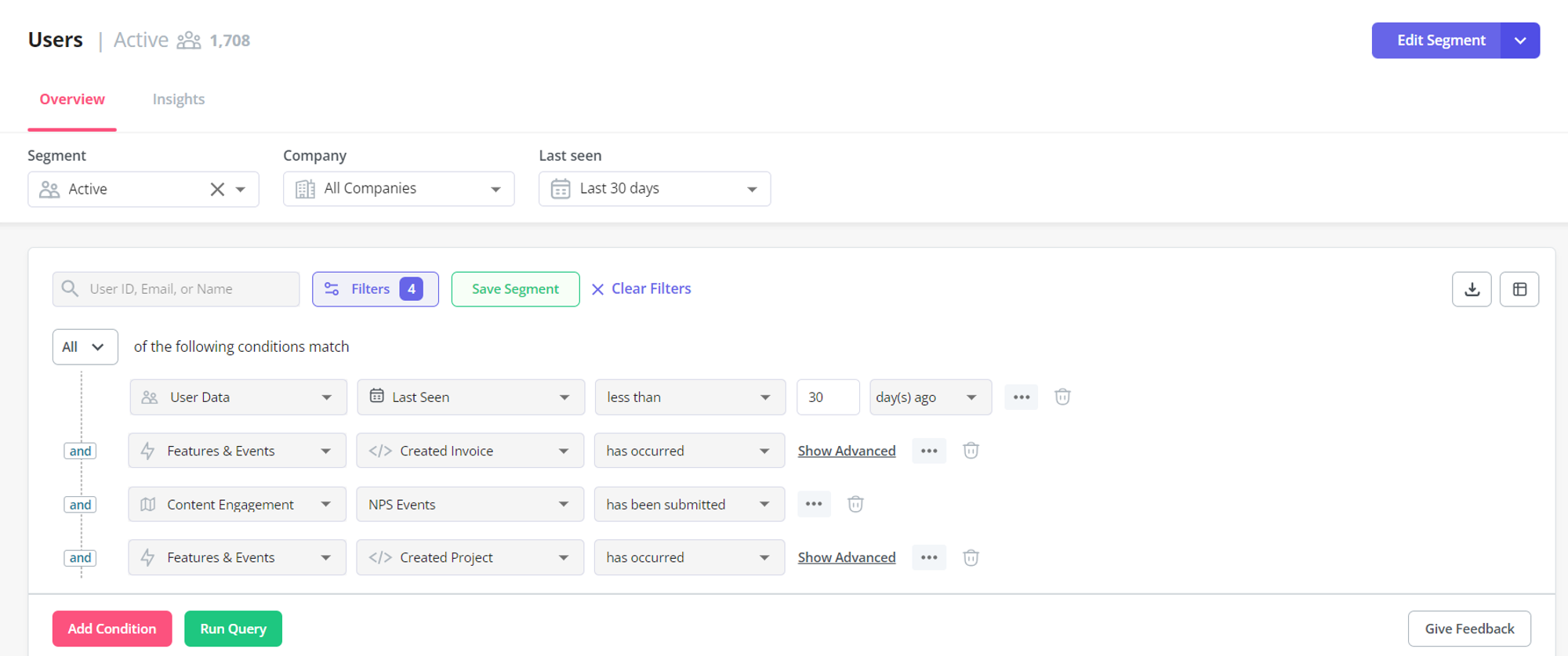
Segment users with Userpilot!
Email surveys
Emails surveys share some of the advantages of in-app surveys: you can target a very specific audience and collect valuable user feedback at scale.
However, they make it more difficult to reach the end-user and tend to have lower response rates. The feedback may also not be as valid as in-app because the experience of using the product isn’t as fresh in their minds.
Having said that, they may be the only way to collect feedback from churned users.
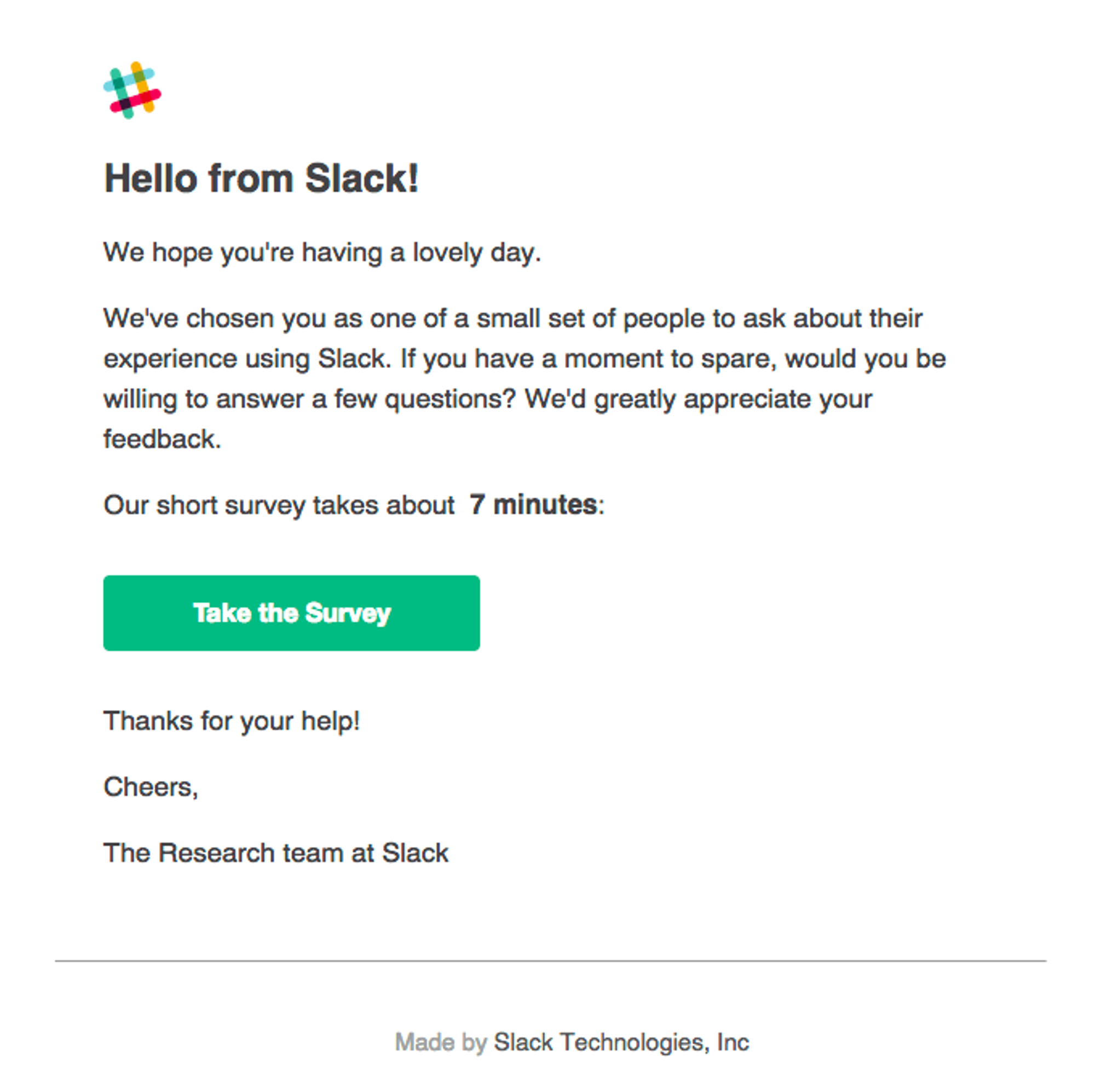
An example of an email survey from Slack.
Feedback widgets
As mentioned, feedback widgets are used to collect passive feedback and customer requests. For example, you can include it in your resource center for users to submit feedback whenever they want.
Such feedback can be valuable because users give it when they feel the need, for example, when they discover a bug or are particularly displeased with a user experience aspect. It’s not always negative feedback, though.
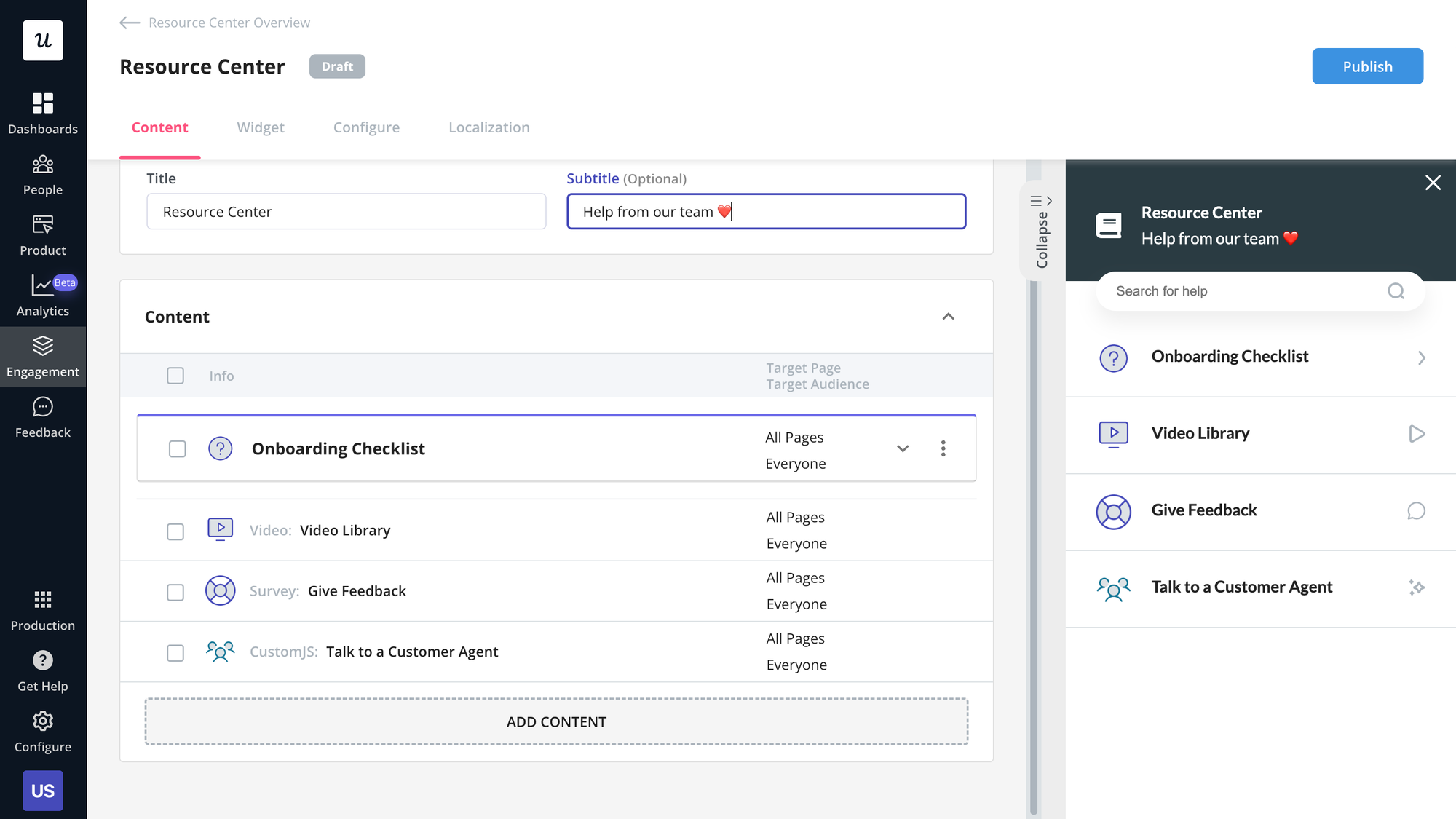
Collect passive feedback in Userpilot’s resource center.
Different types of questions used for collecting user feedback
To collect in-depth user feedback, use both closed-ended and open-ended questions.
Closed-ended user feedback survey questions come in the form of:
- Likert scale questions, like in NPS, CSAT, PMF (Product-Market Fit), or CES (Customer Effort Score) surveys.
- Multiple-choice questions.
- Alternative choice questions, e.g. Yes/No questions.
The main advantage of closed-ended questions is that they’re quick and easy to answer. Moreover, the responses are easy to quantify and analyze. However, they may lack depth.
To allow users to provide more nuanced and detailed responses, follow them up with open-ended questions.
When to collect feedback to get deeper user insights
SaaS teams can benefit from collecting user feedback at all the user journey stages.
After customer onboarding
Customer onboarding is a crucial stage in the user journey because it allows users to experience the product value, without which there’s no activation or adoption.
Adoption metrics can show you if your onboarding works, while flow analytics give you insights into user engagement with the onboarding flows.
However, it’s still a good practice to collect feedback at the end of the onboarding to identify potential barriers and areas for improvement that analytics data doesn’t reveal.

Collect feedback at the end of the onboarding process.
After a new feature release
When you roll out new features, collecting user feedback is a must.
First, it offers insights into the user experience with the feature and how to enhance it.
To get the information, try triggering your in-app surveys contextually, just when the user engages with the feature. As the experience is fresh in the user’s mind, the feedback is more reliable.
Secondly, by collecting feedback from users who haven’t used the feature, you can identify barriers to its adoption, like inadequate new feature announcements.
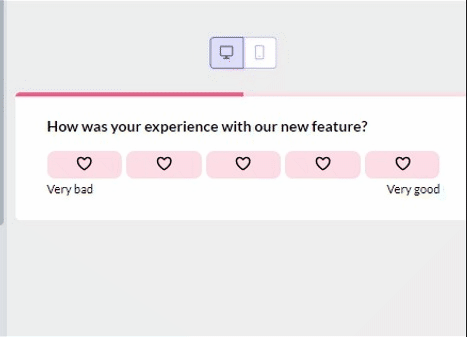
Collect feedback after a new feature release with Userpilot.
Before the trial period ends
There might be multiple reasons why the users don’t upgrade to one of your paid plans by the end of the free trial. Asking them in a survey could be the only way to determine the root cause.
Insights from the survey can help you improve future conversions.
For example, if users find your paid plans too expensive, you may need to rethink your pricing strategy. If they find the product doesn’t offer enough value, the feedback can help you figure out how to increase it, for example, by adding new features.
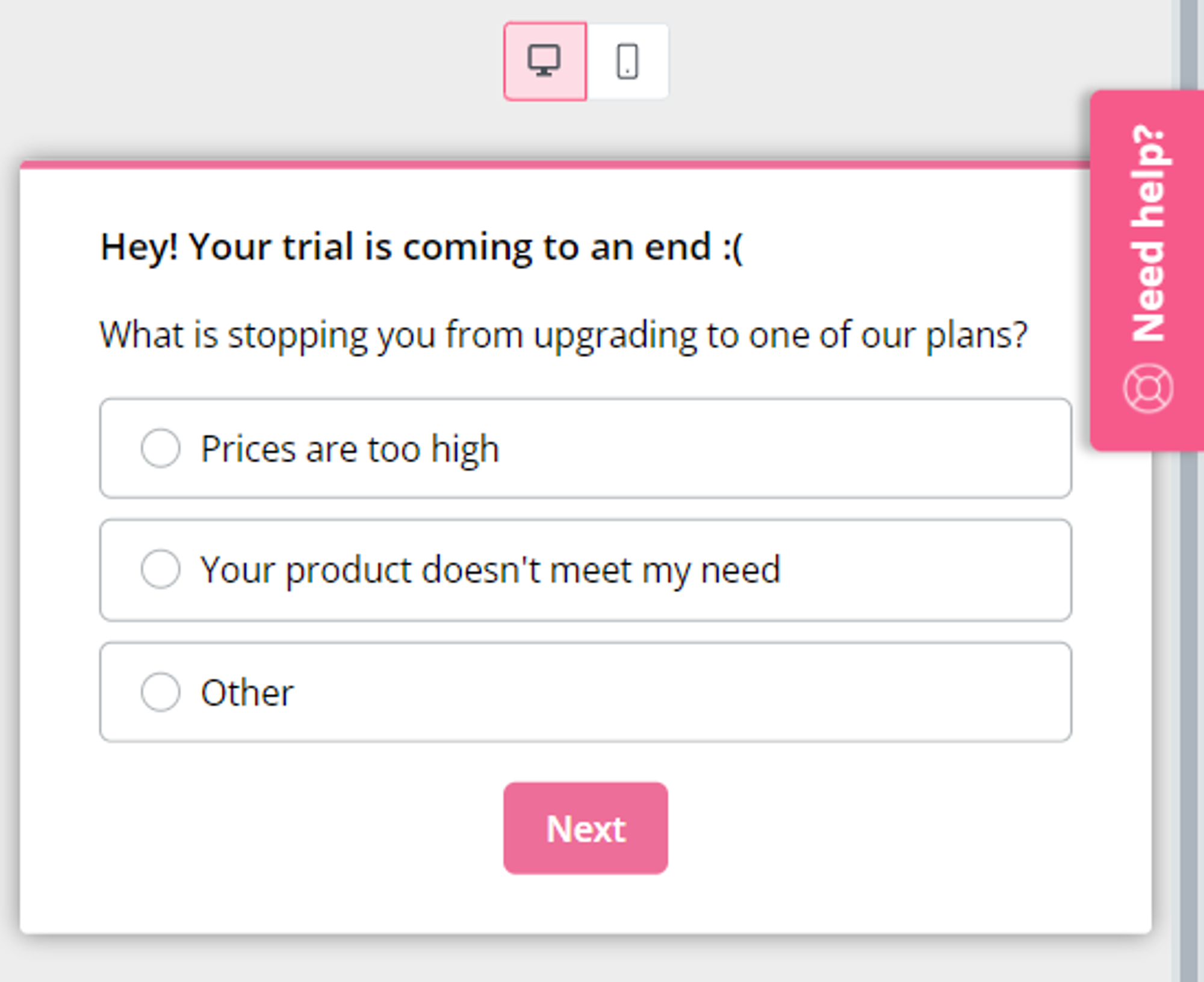
End-of-trial survey created in Userpilot.
After getting help
Another common use for surveys is to collect feedback on the quality of the support they’ve received.
Why does it matter?
It helps you enhance your customer support processes, which has a massive impact on customer success and their overall perception of the product and brand.
Moreover, it allows you to identify users who may need additional support.
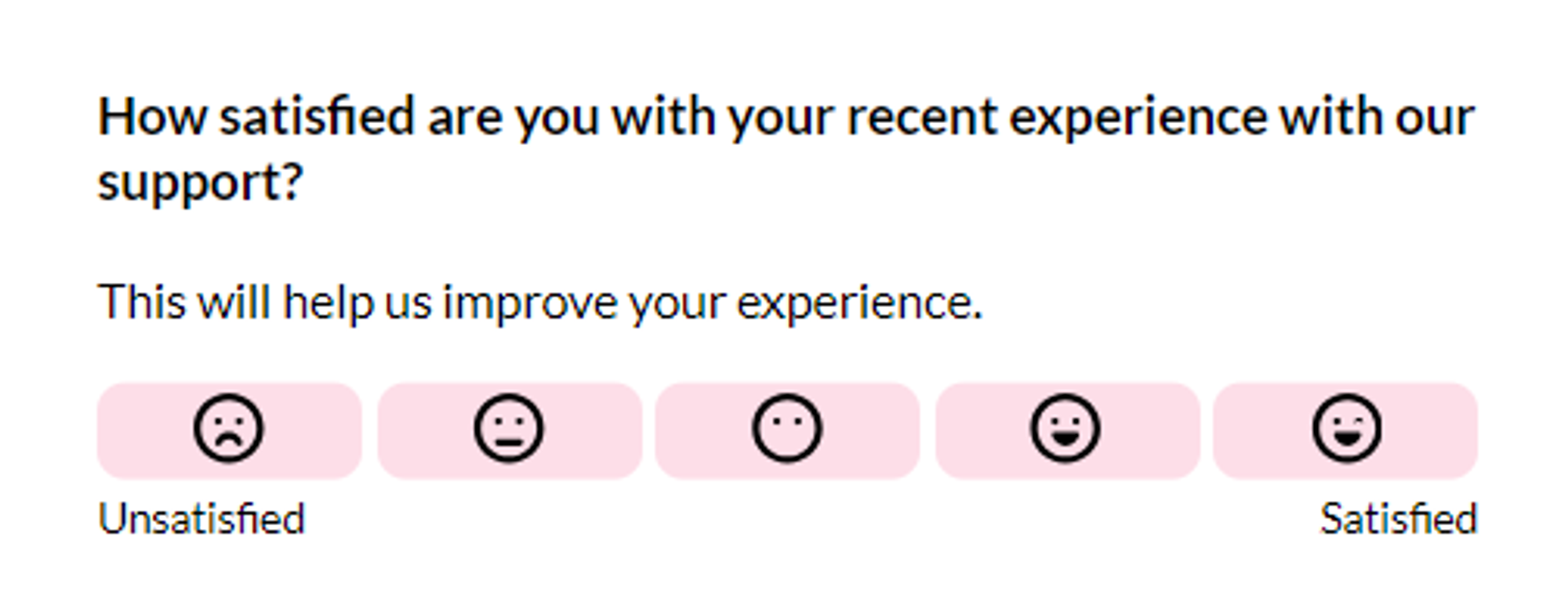
Customer experience survey created in Userpilot.
After the user completes a specific action
Contextually triggered surveys are also great for gathering feedback after the user completes an action.
Let’s imagine that generating a report in your app is a relatively complex process and not all users manage to complete it.
By sending a survey to users who started the process and either dropped off or completed it successfully, you can gain a deeper understanding of the challenges that the users face and how to address them.
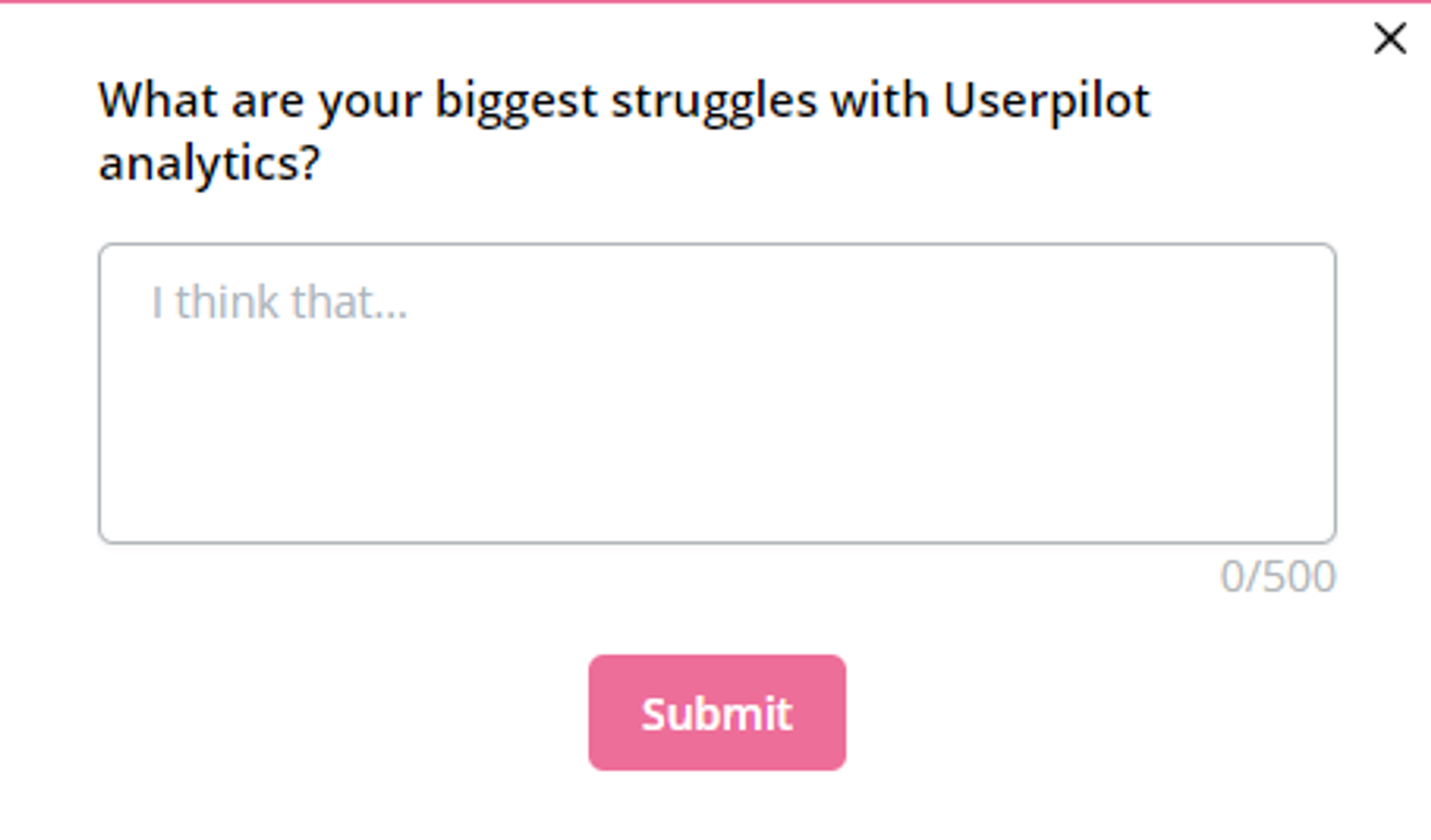
Triggered contextual surveys in Userpilot.
Before a customer churns
Users who churn can be a source of valuable insights into how the product fails to meet their expectations.
The challenge is gathering such feedback as the users can be too disengaged to bother.
If they’re on a paid plan, you can embed the survey in the cancellation flow. In this way, you can collect some feedback before they leave.
What about users on the free plan or free trial who just suddenly disappear?
Segment your churned users and run path analysis to identify actions that lead to churn. Next, combine them in a custom event and use it to trigger the survey.
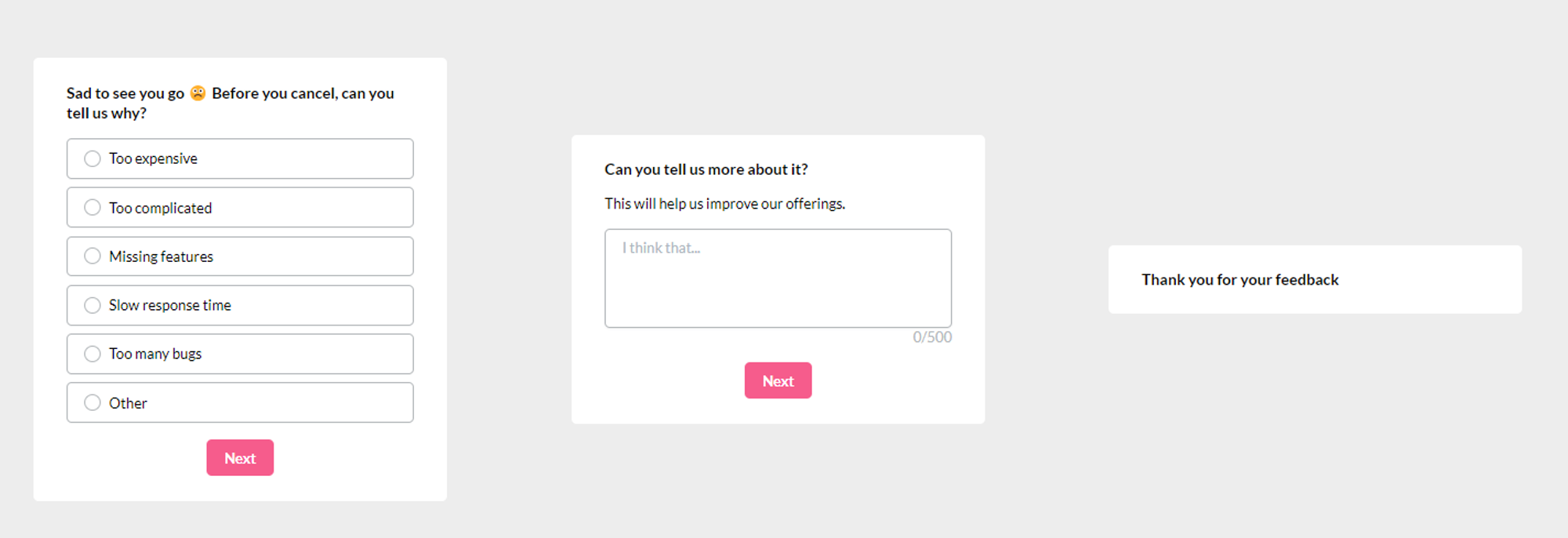
Exit survey created in Userpilot.
User feedback tools
Collecting and analyzing user feedback is a breeze if you have the right tools. Let’s wrap up by looking at 3 platforms with excellent feedback capabilities.
Userpilot: Best for collecting and analyzing in-app user feedback
Userpilot is a product growth platform with advanced feedback functionality.
Creating in-app surveys is dead easy thanks to the template library and visual editor. If you need help refining the question, there’s an AI writing assistant, and the localization feature allows you to automatically translate it.
Userpilot offers event-based triggering for contextual feedback collection or you can schedule them for a specific day and time.
When it comes to analysis, there’s a dedicated NPS dashboard and feedback analytics, which makes Userpilot a comprehensive user feedback management solution.

Collect and analyze in-app user feedback with Userpilot!
SurveyMonkey: Best for collecting feedback with email surveys
SurveyMonkey is a popular feedback platform known for its user-friendly UI and a wide range of features.
These include:
- Customizable survey templates.
- Question bank.
- Feedback analysis tool.
- Integration capabilities (Hubspot, Salesforce, Tableau, Power BI).
You can distribute the survey via multiple digital channels, including email.
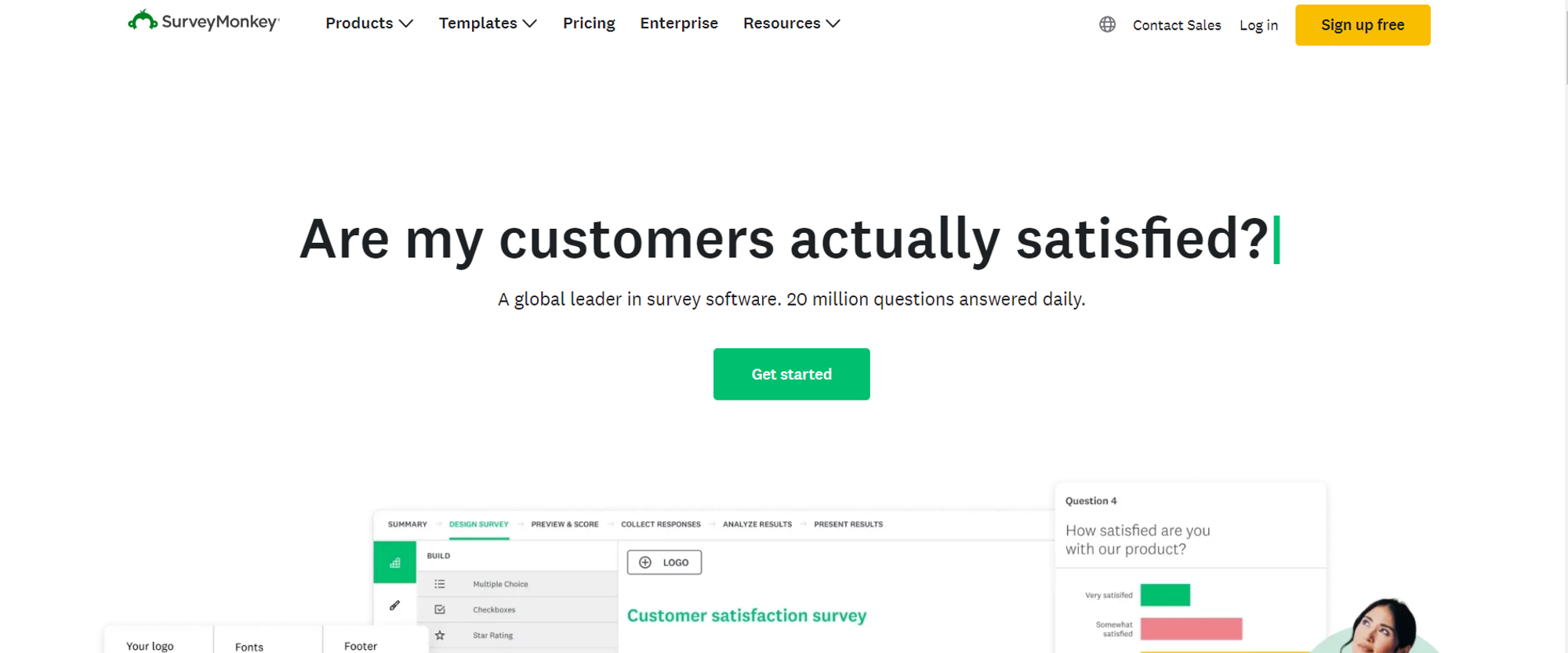
User feedback tools: SurveyMonkey.
UserFeedback: Best for gathering website feedback requests
If you’re looking for a tool to collect feedback from your WordPress site, UserFeedback is all you need.
The platform allows you to create all kinds of user surveys which you can then embed on your site through a shortcode.
As in the other tools, there’s a template library and a question bank, so creating the surveys requires little effort. Once you have the data, you can analyze it through UserFeedback’s intuitive reports.
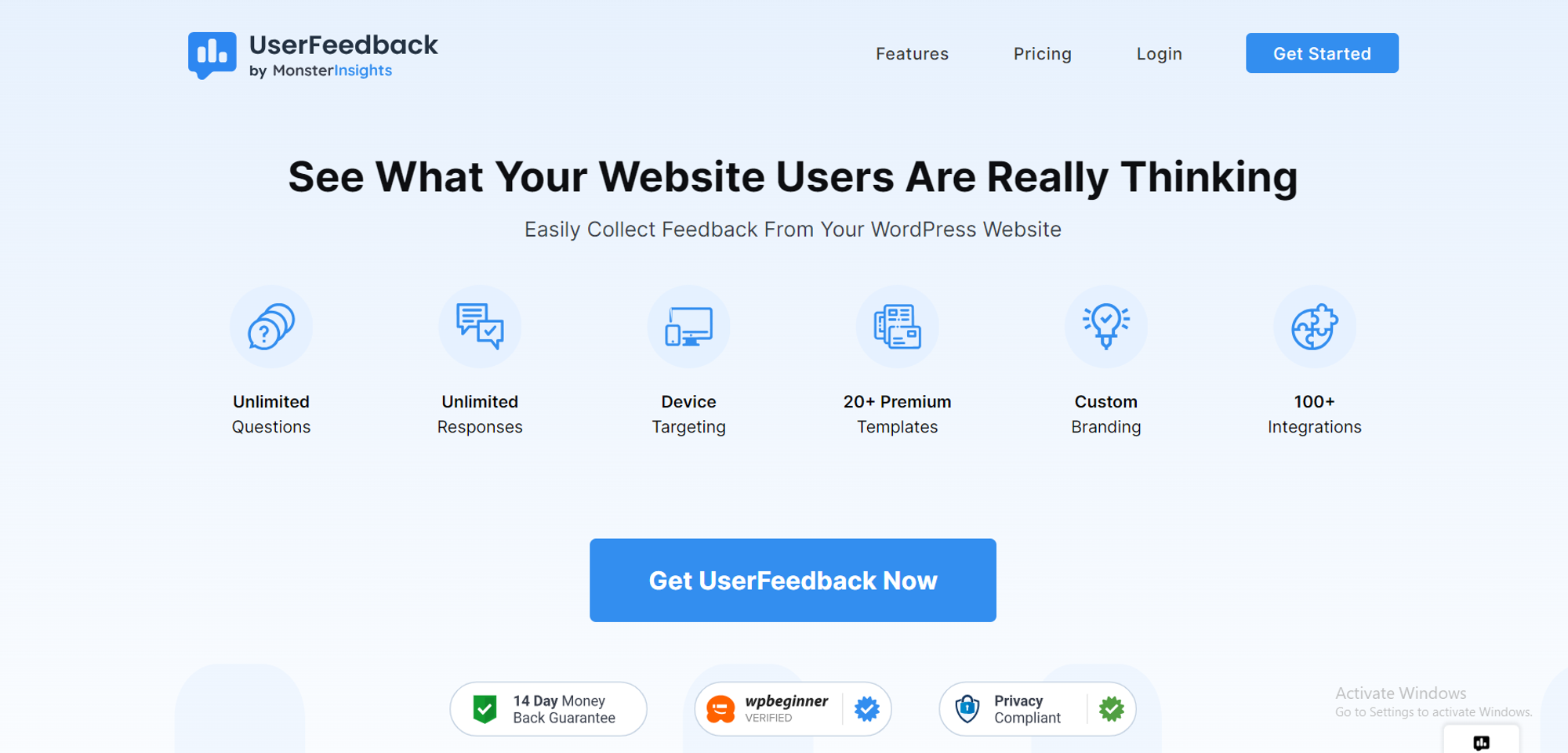
User feedback tools: UserFeedback.
Conclusion
When combined with user behavior analytics, user feedback enables SaaS teams to gain a thorough understanding of user needs, preferences, and problems. That’s how you identify the aspects of the user experience that underperform or don’t meet user expectations.
If you would like to learn more about Userpilot’s feedback capabilities, book the demo!


